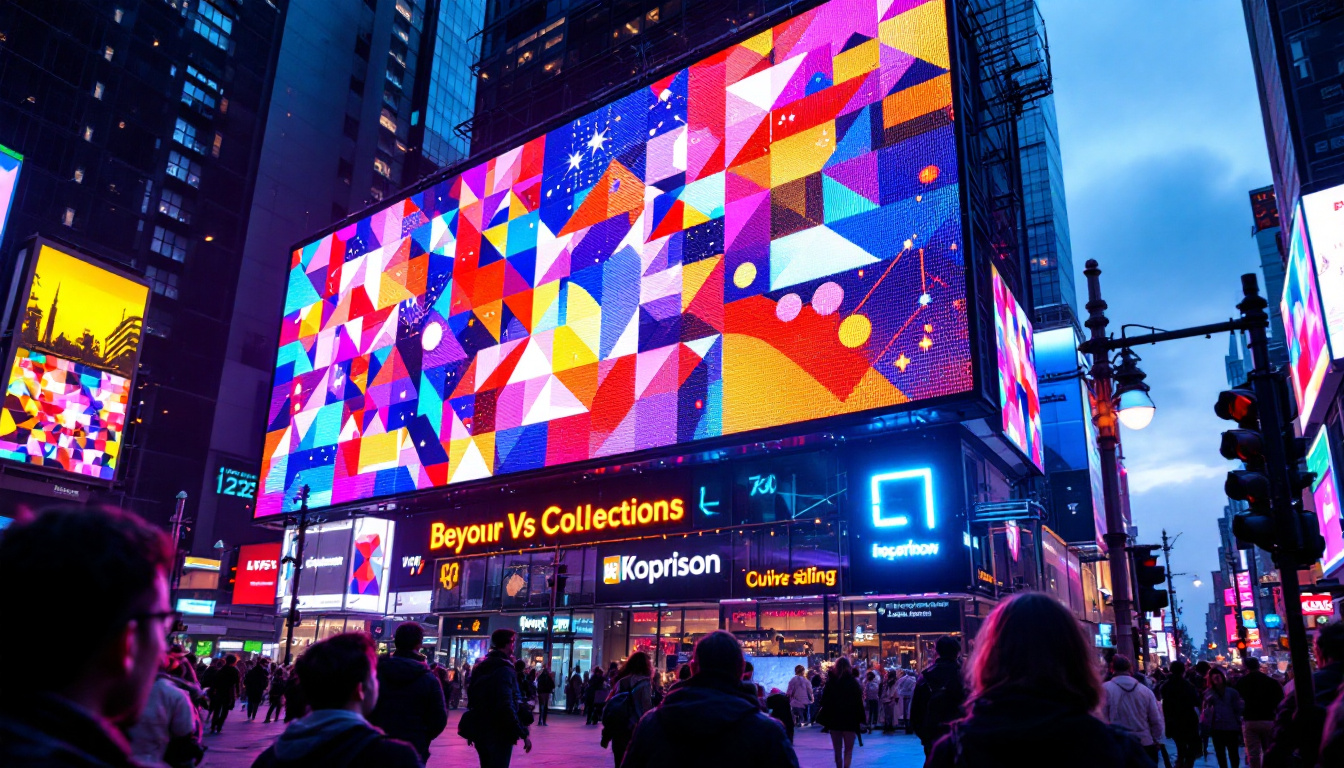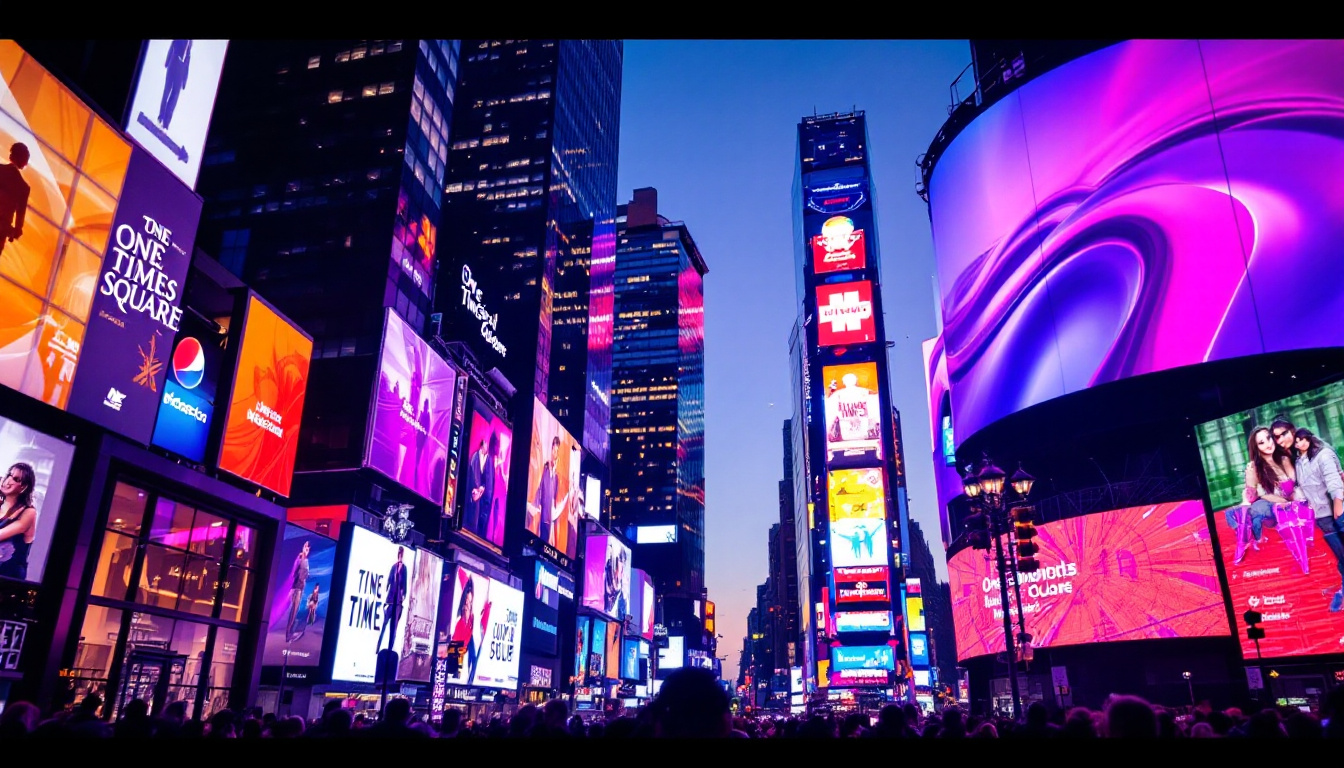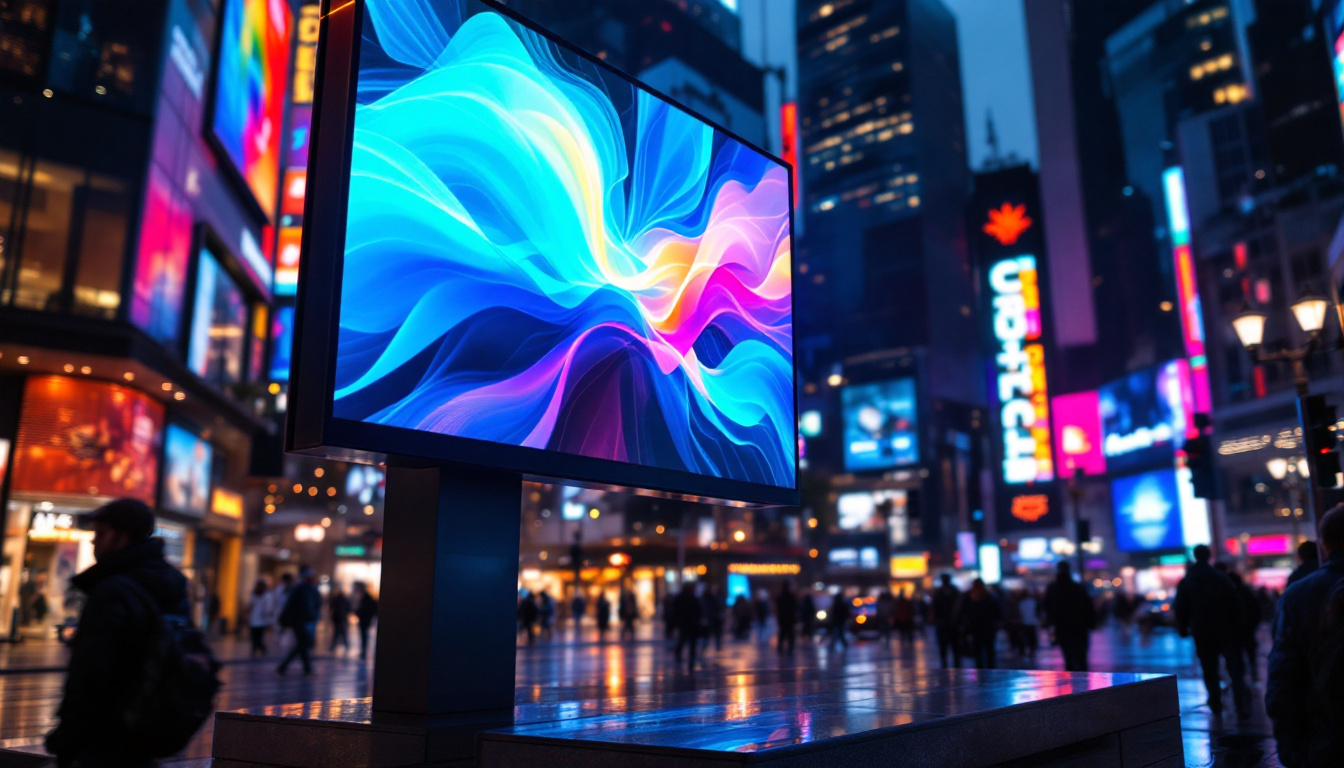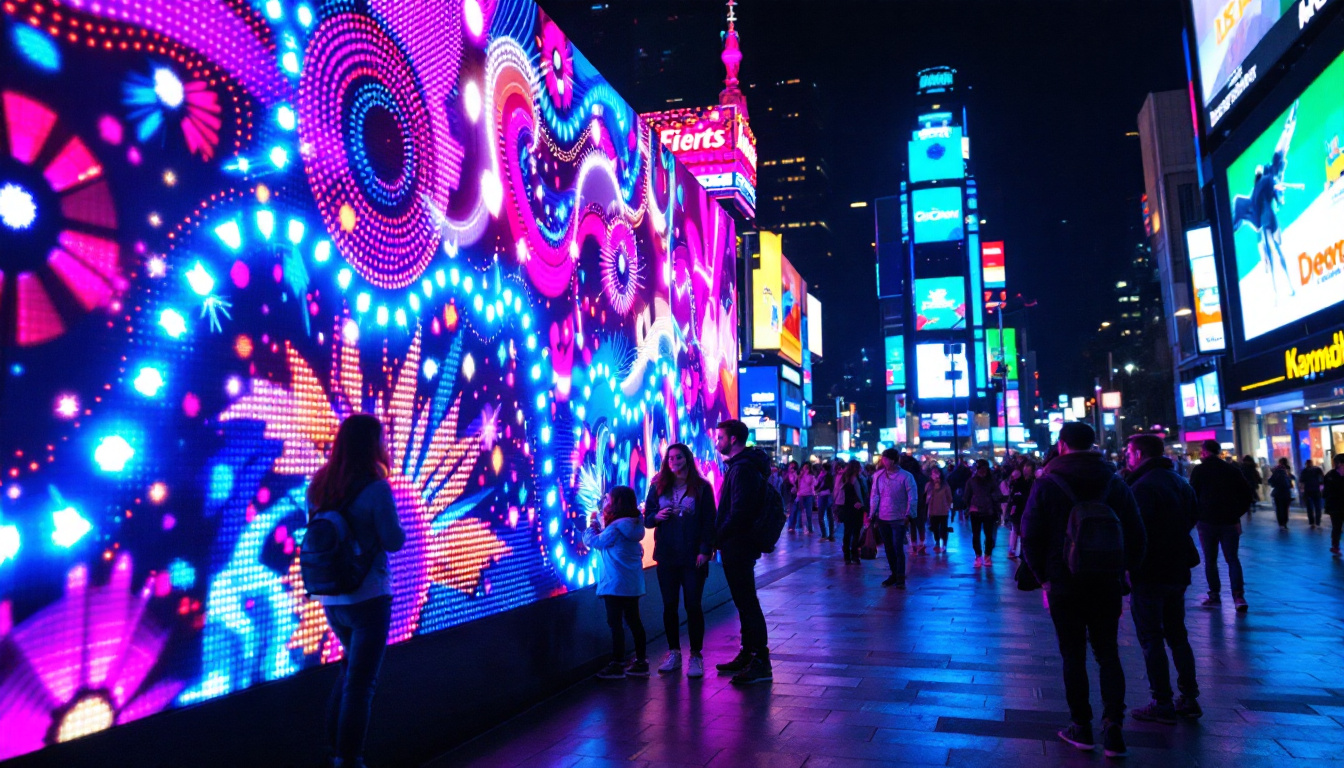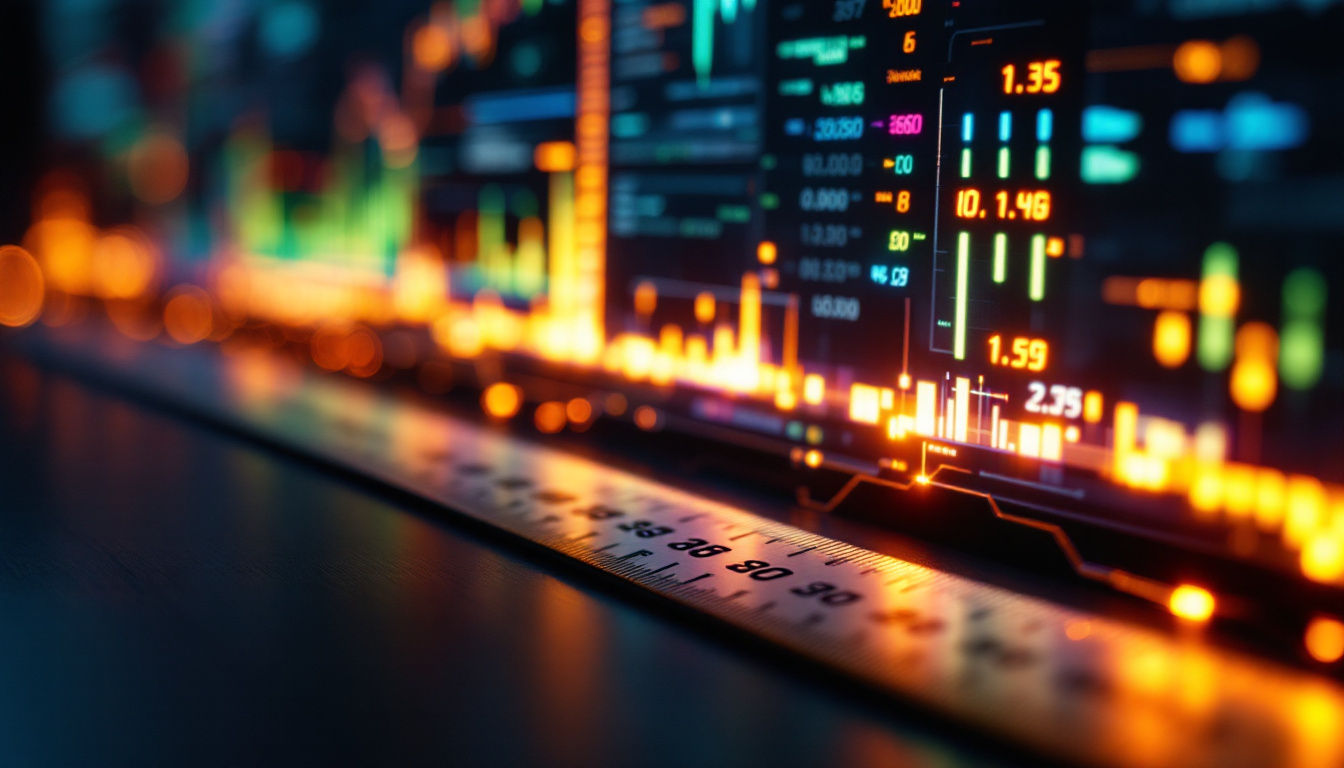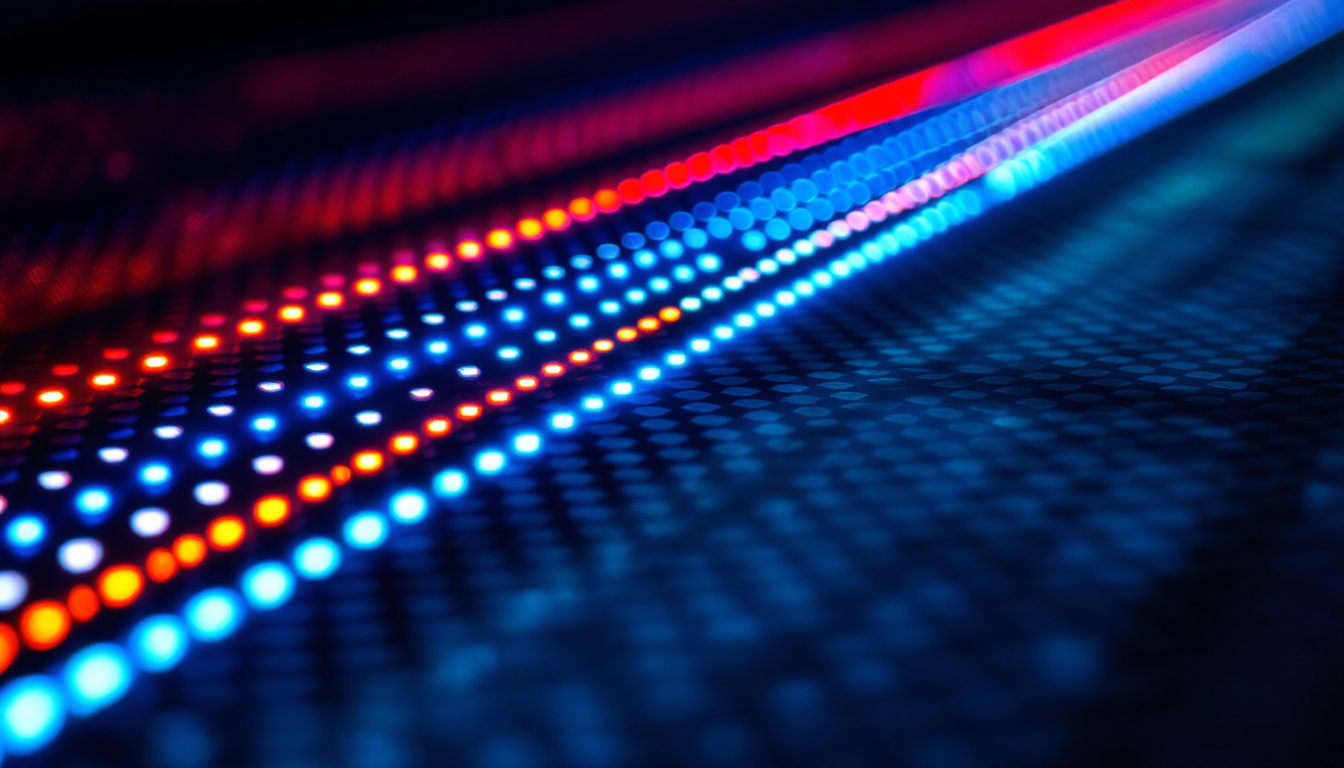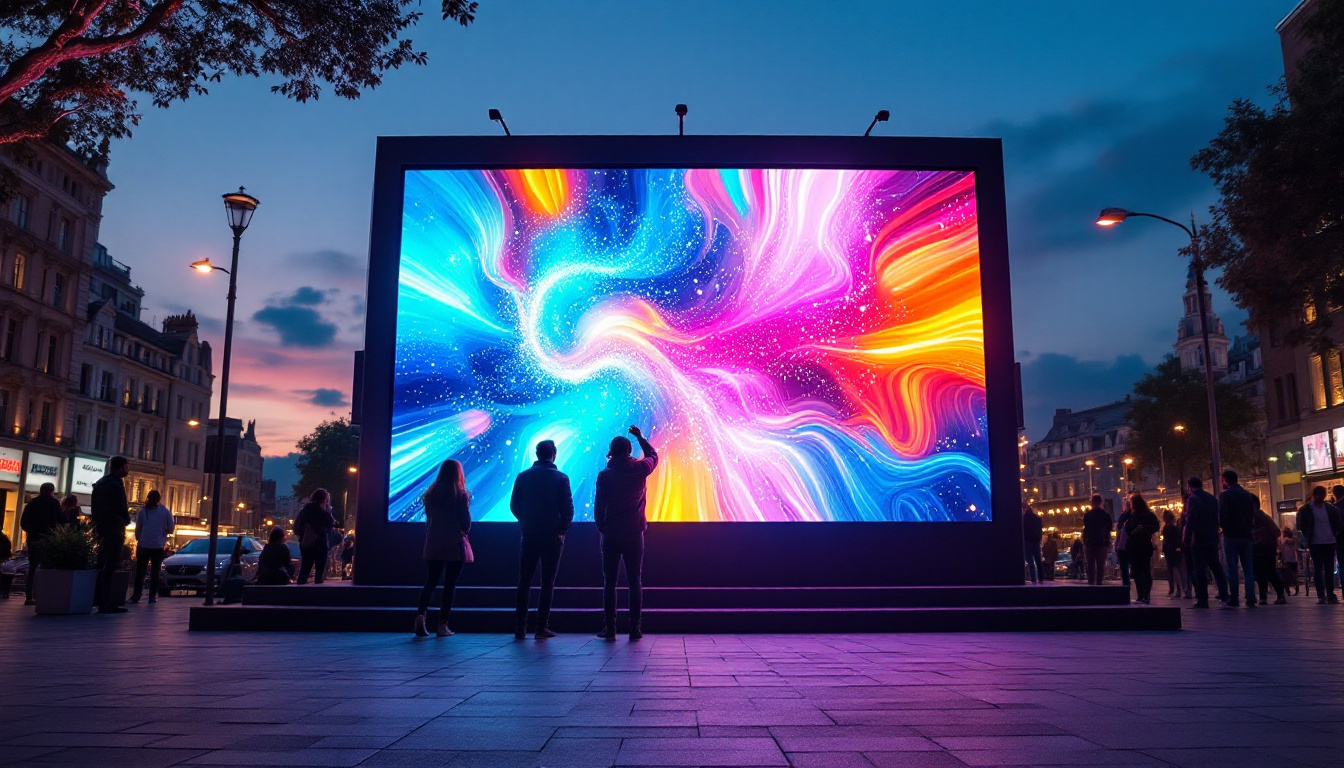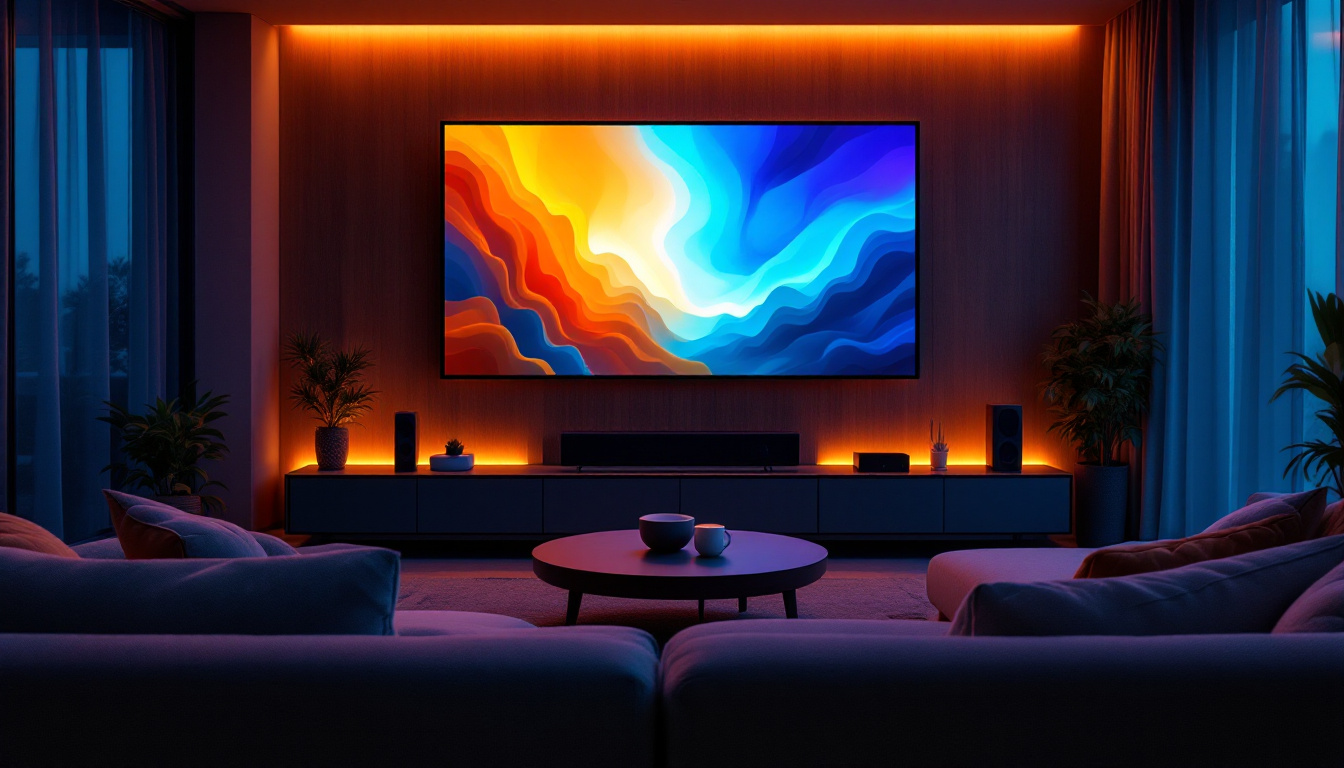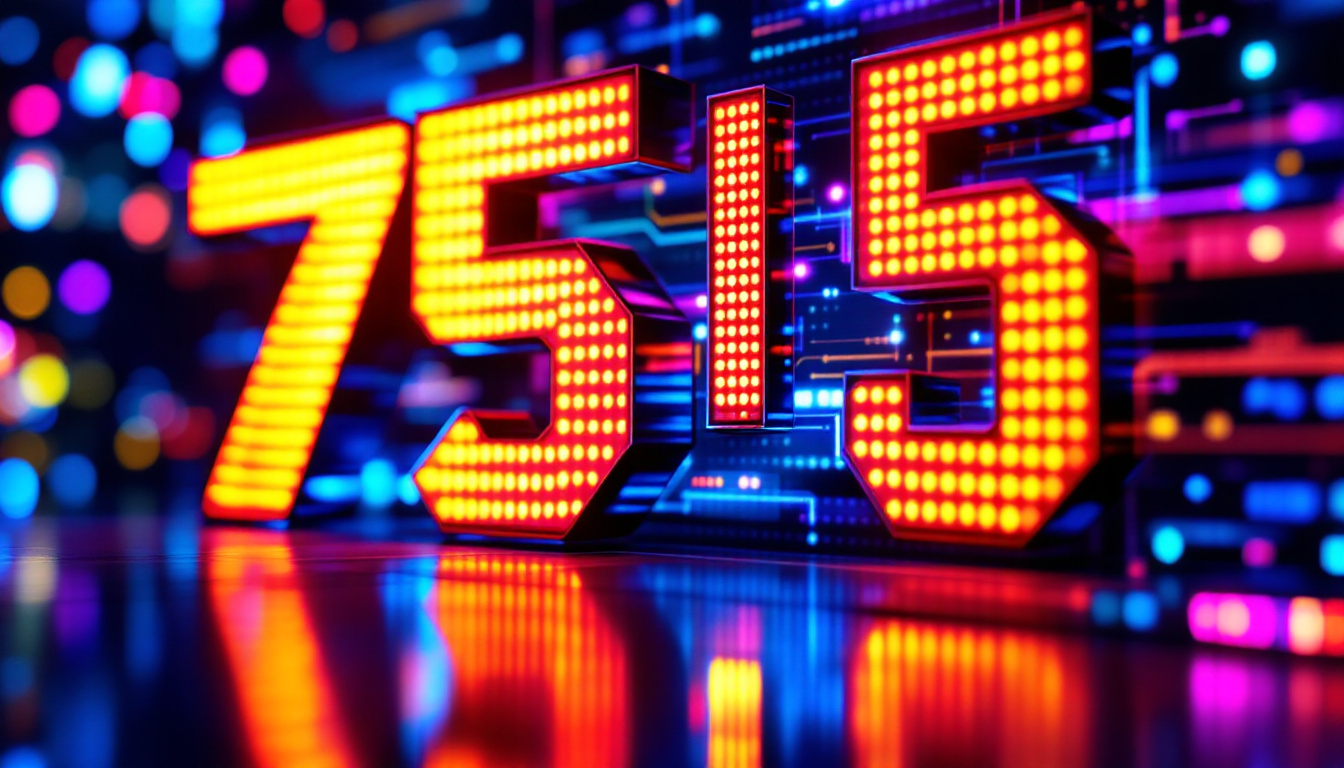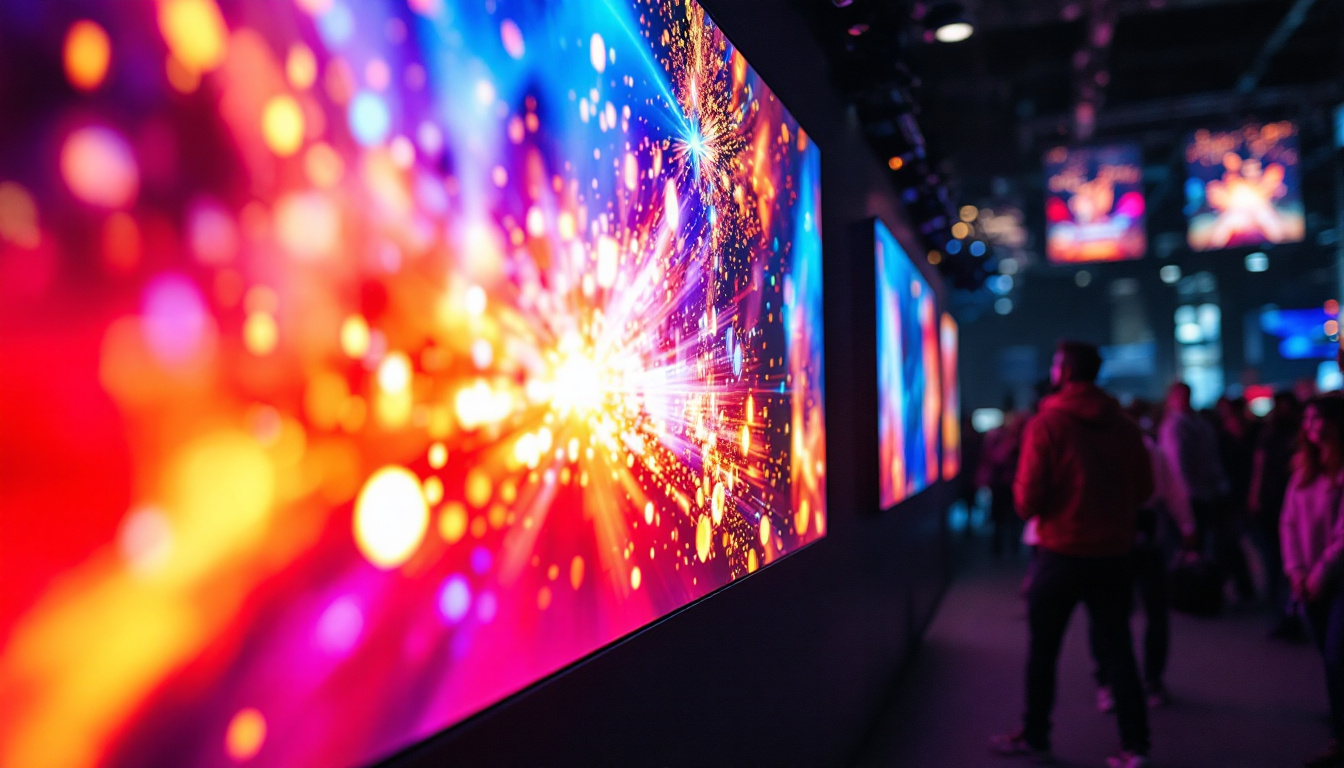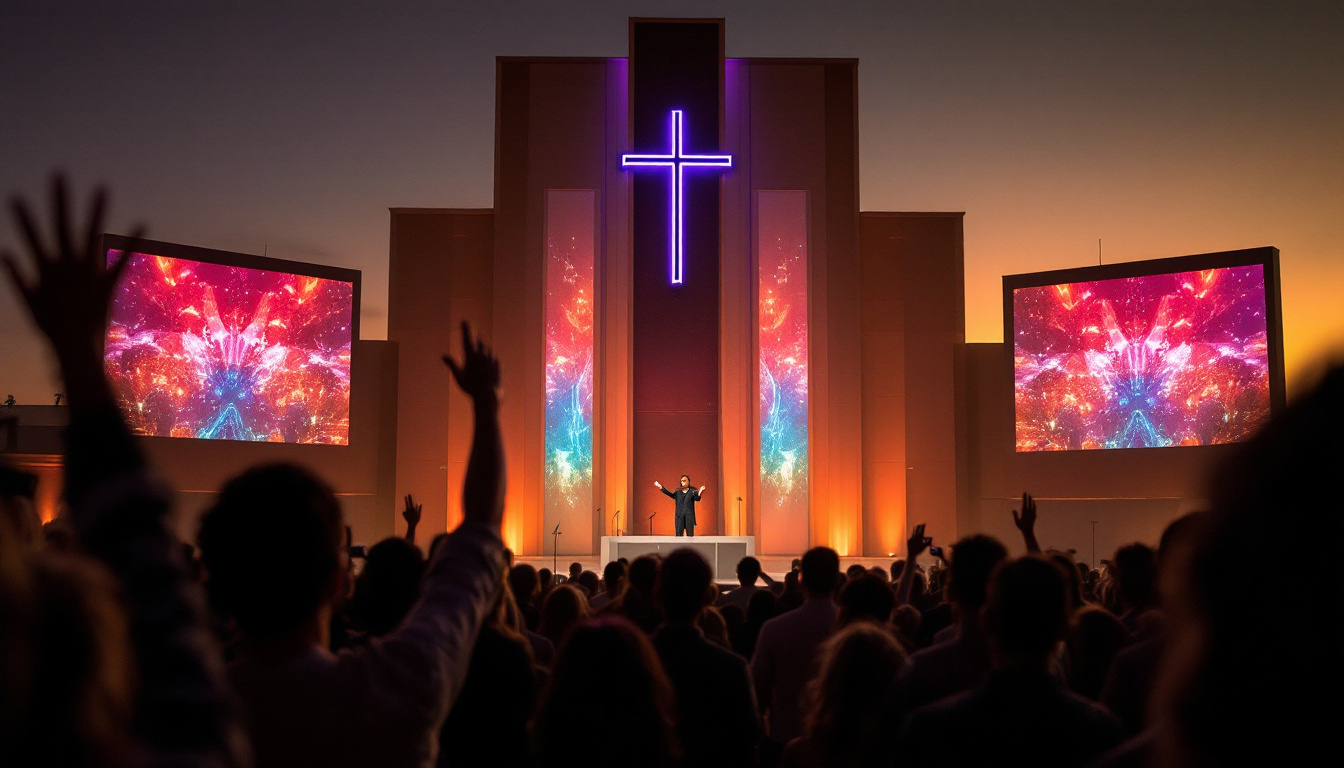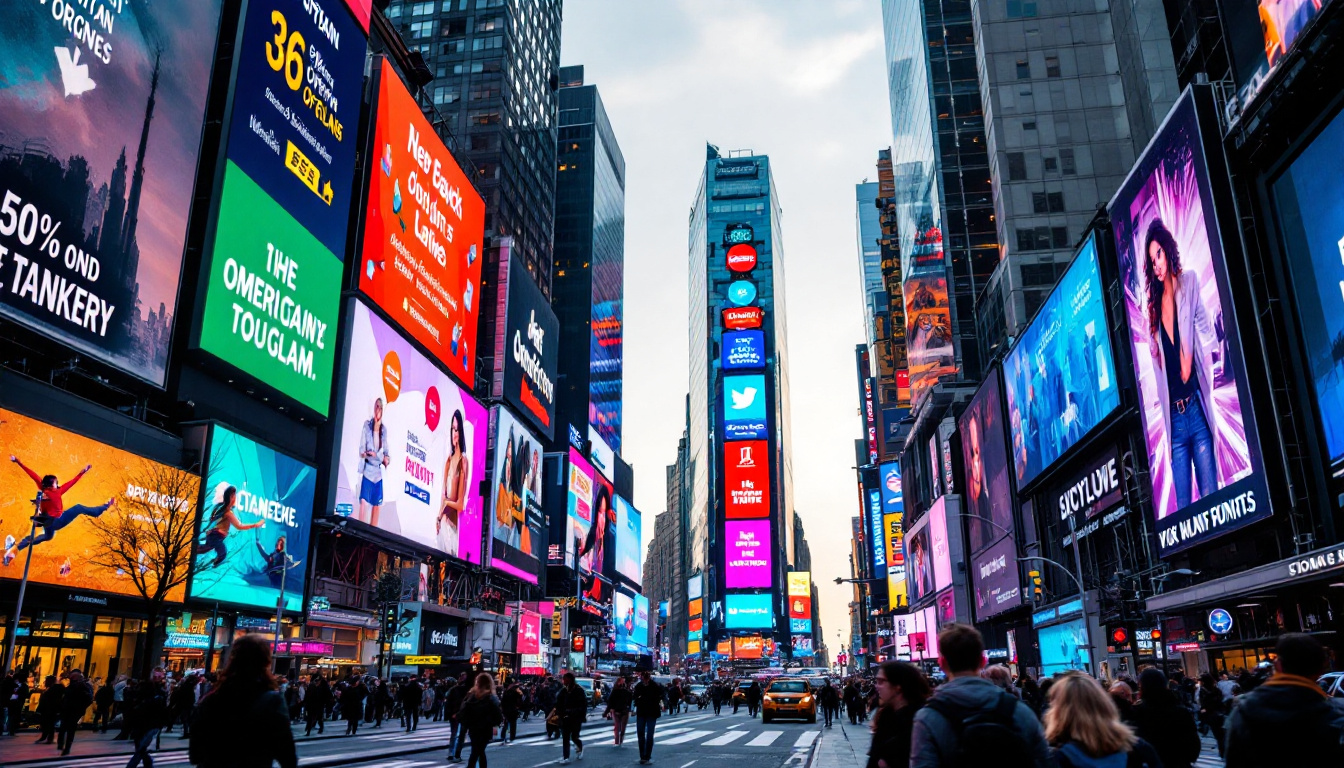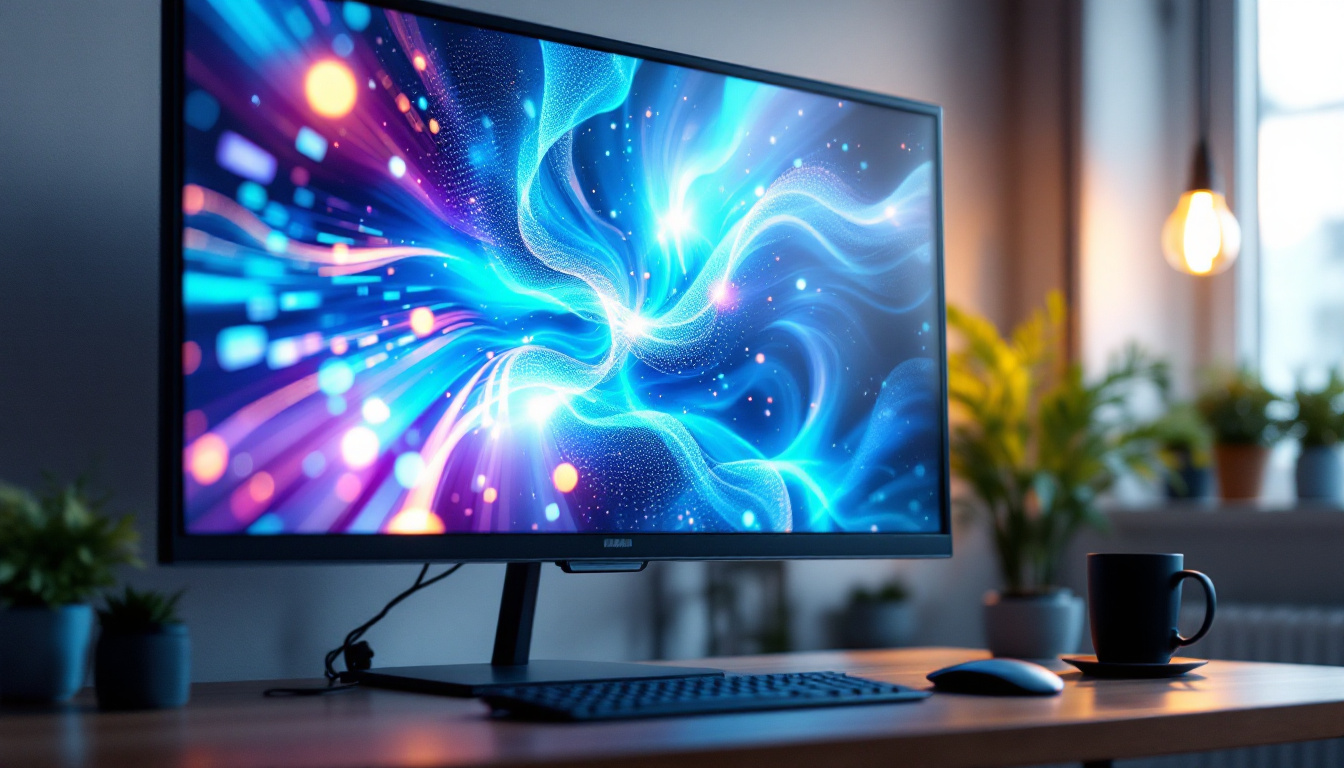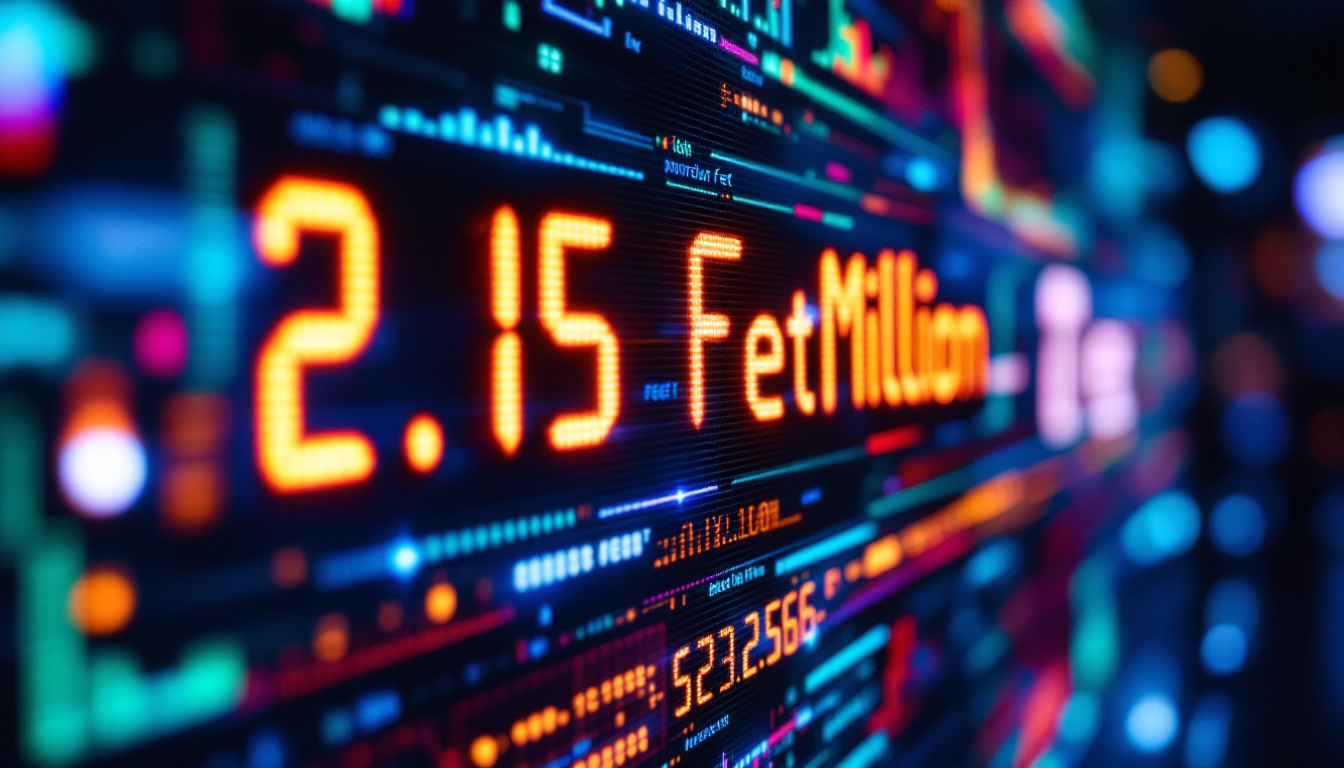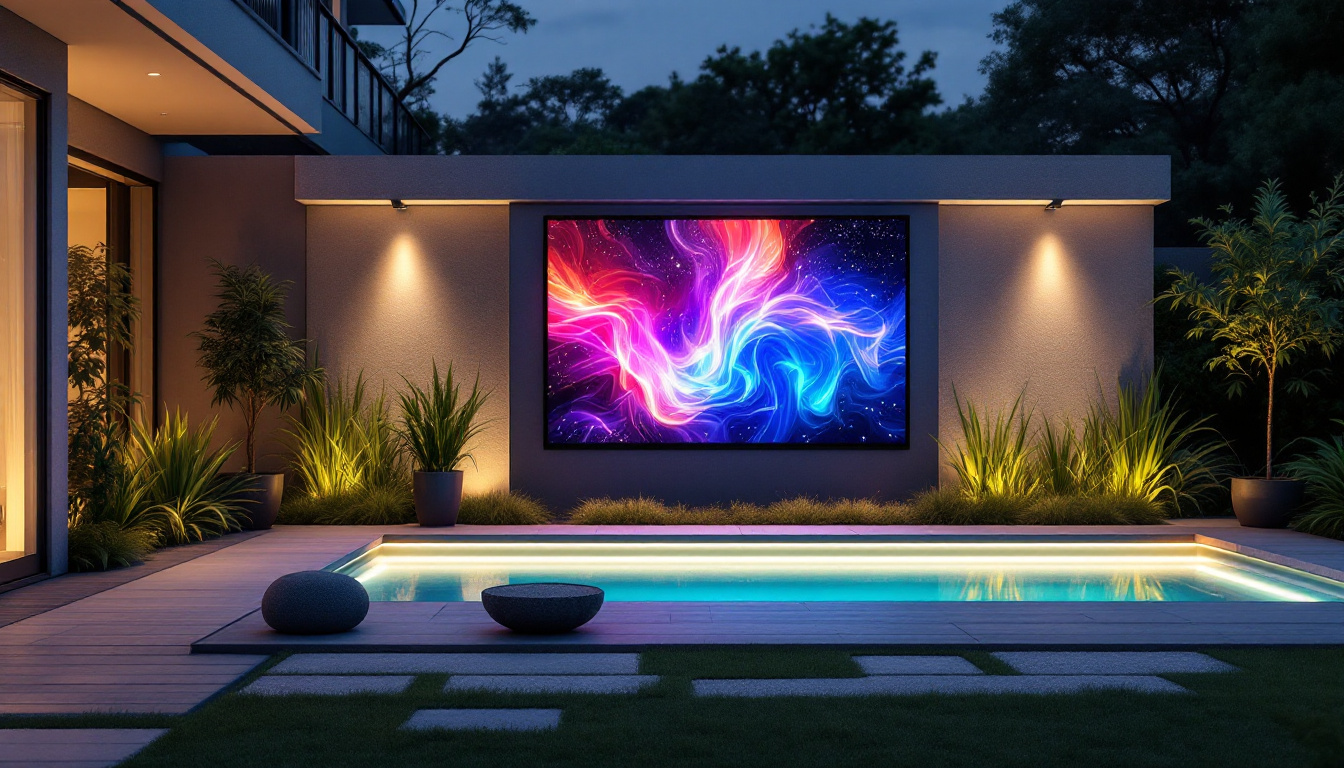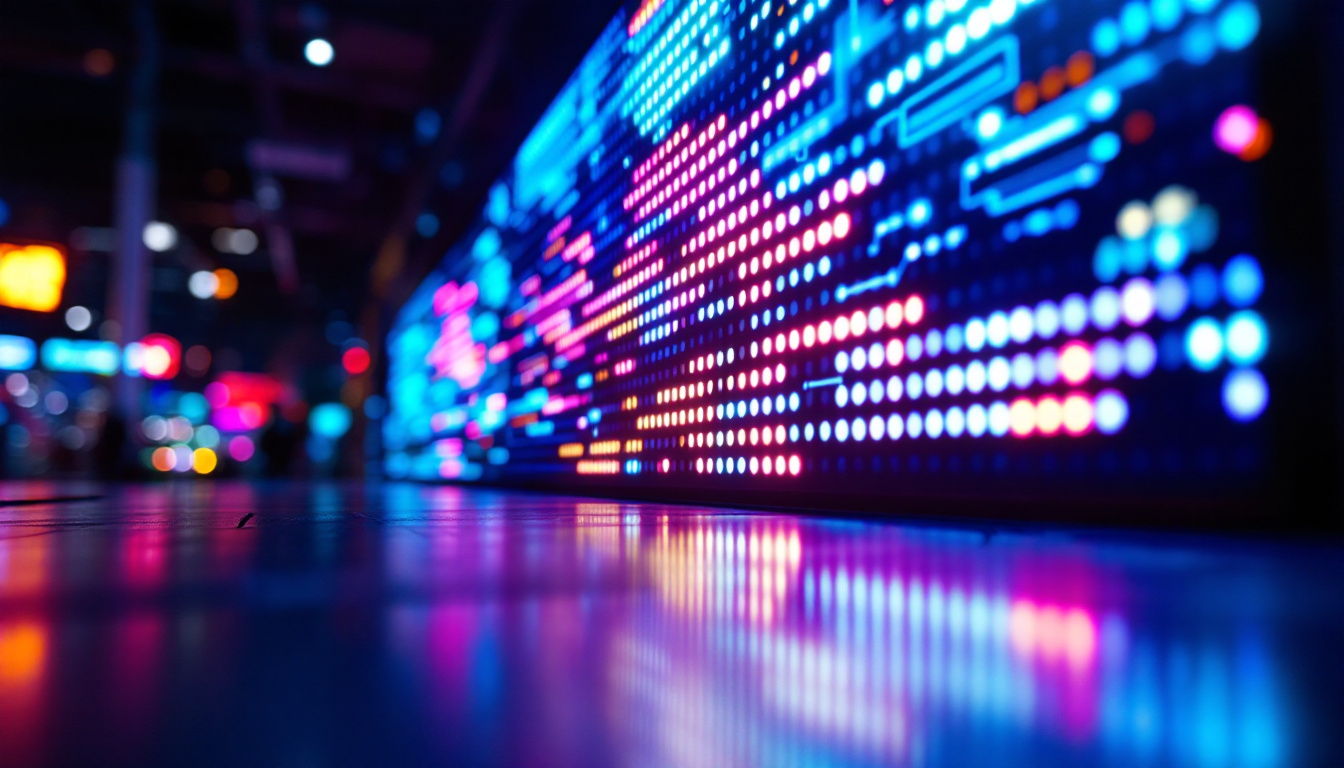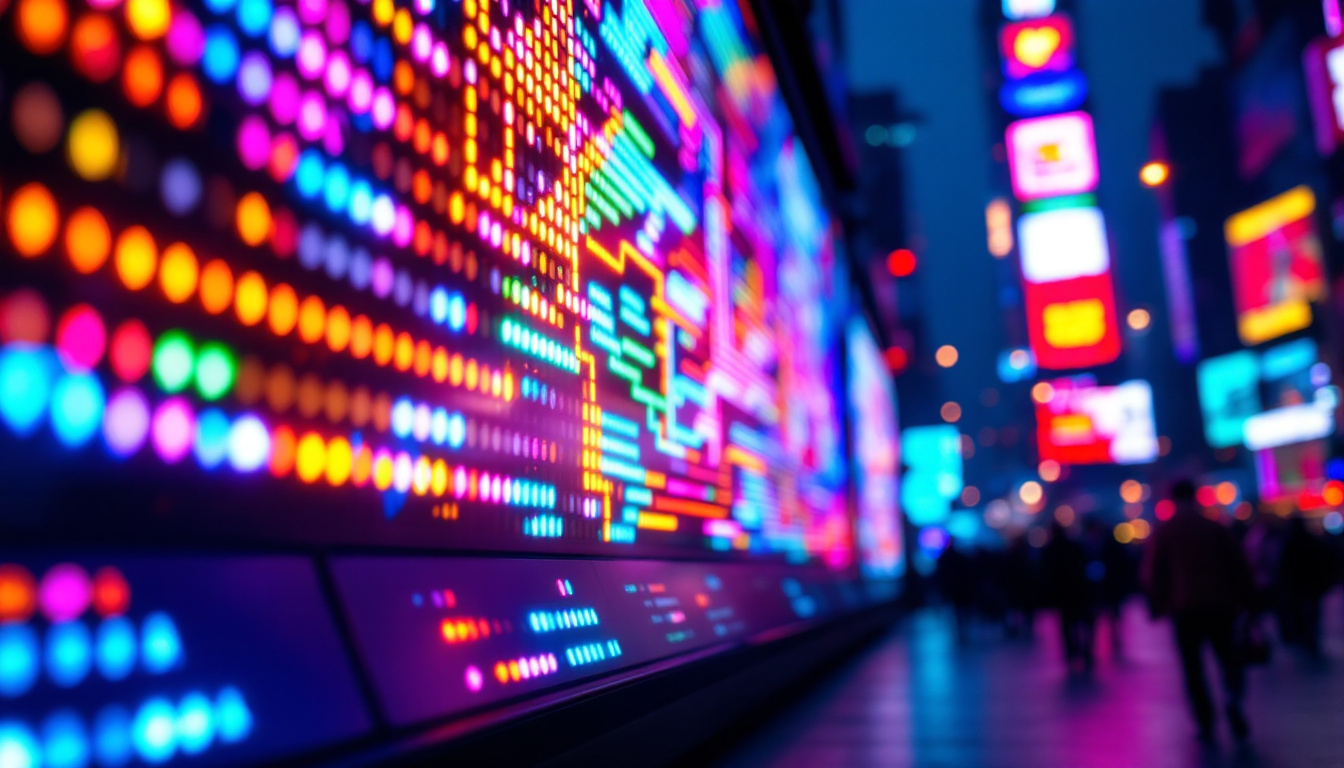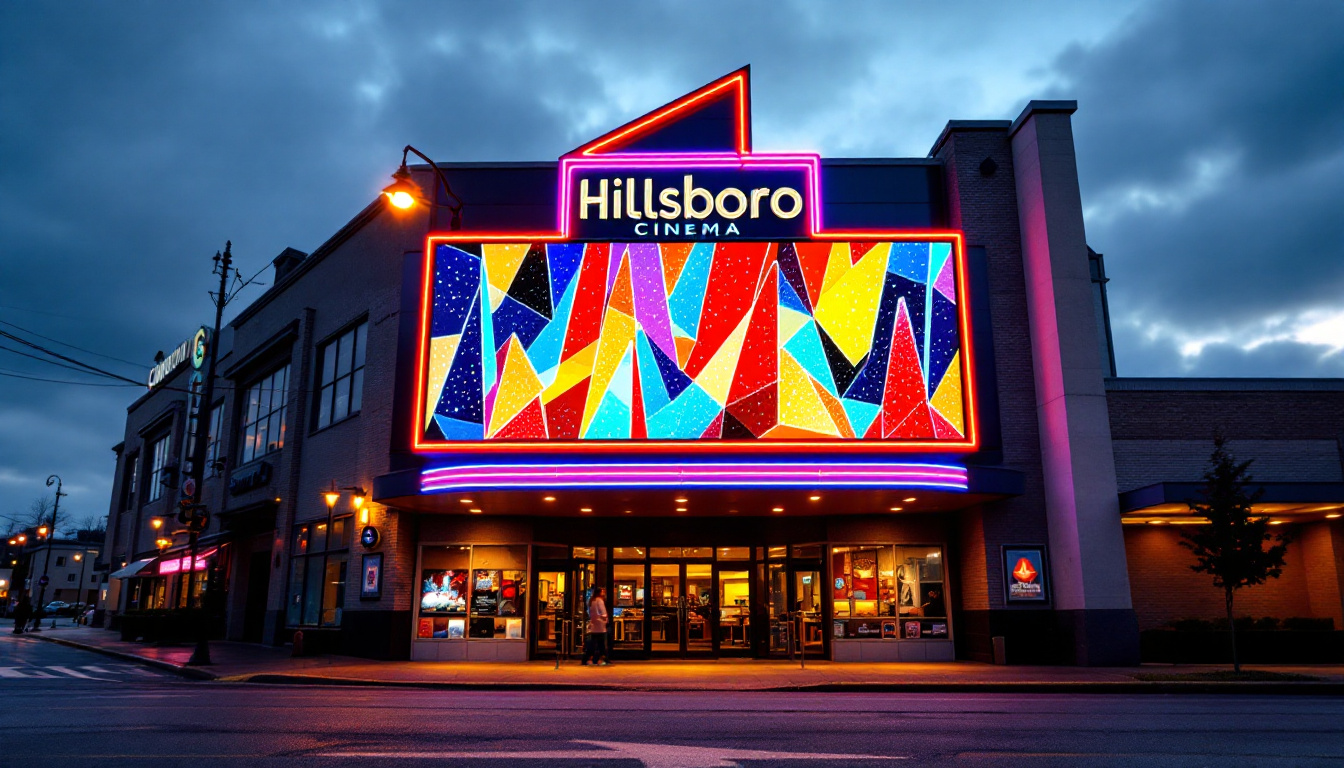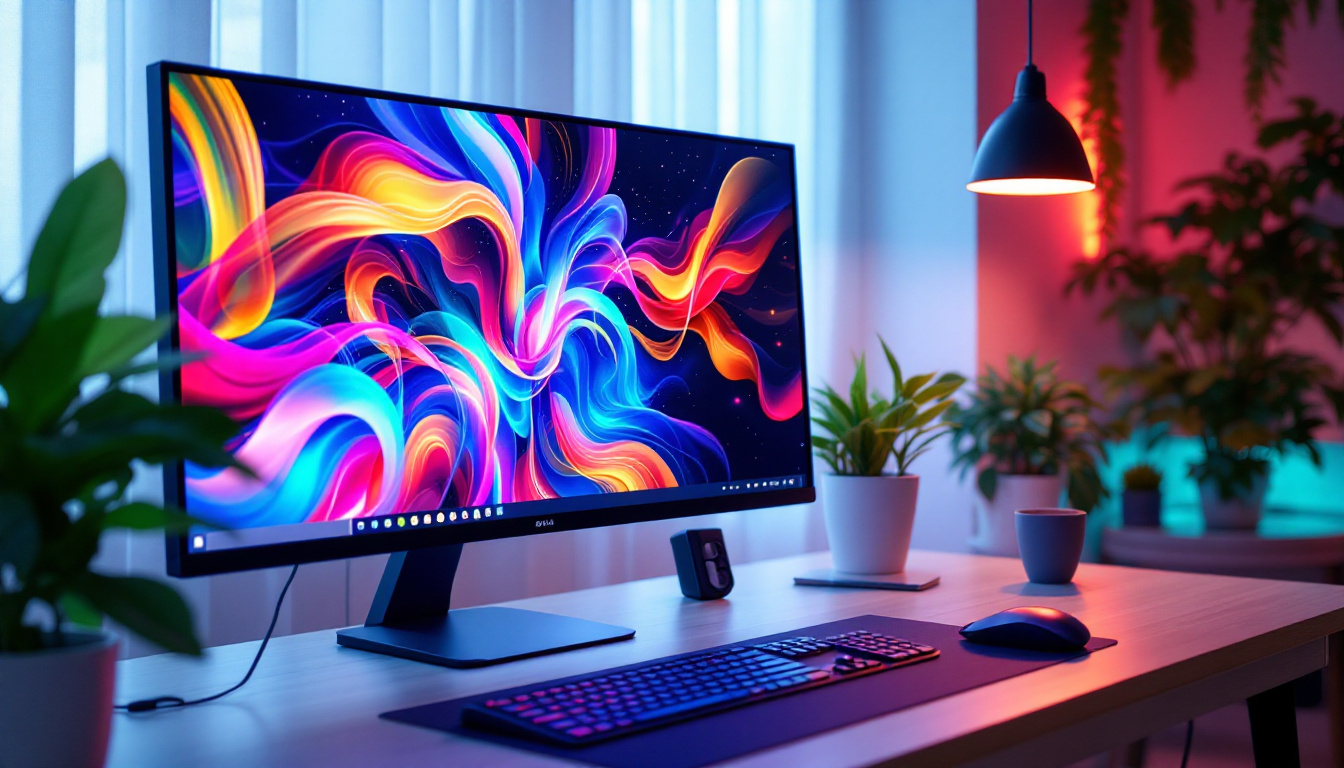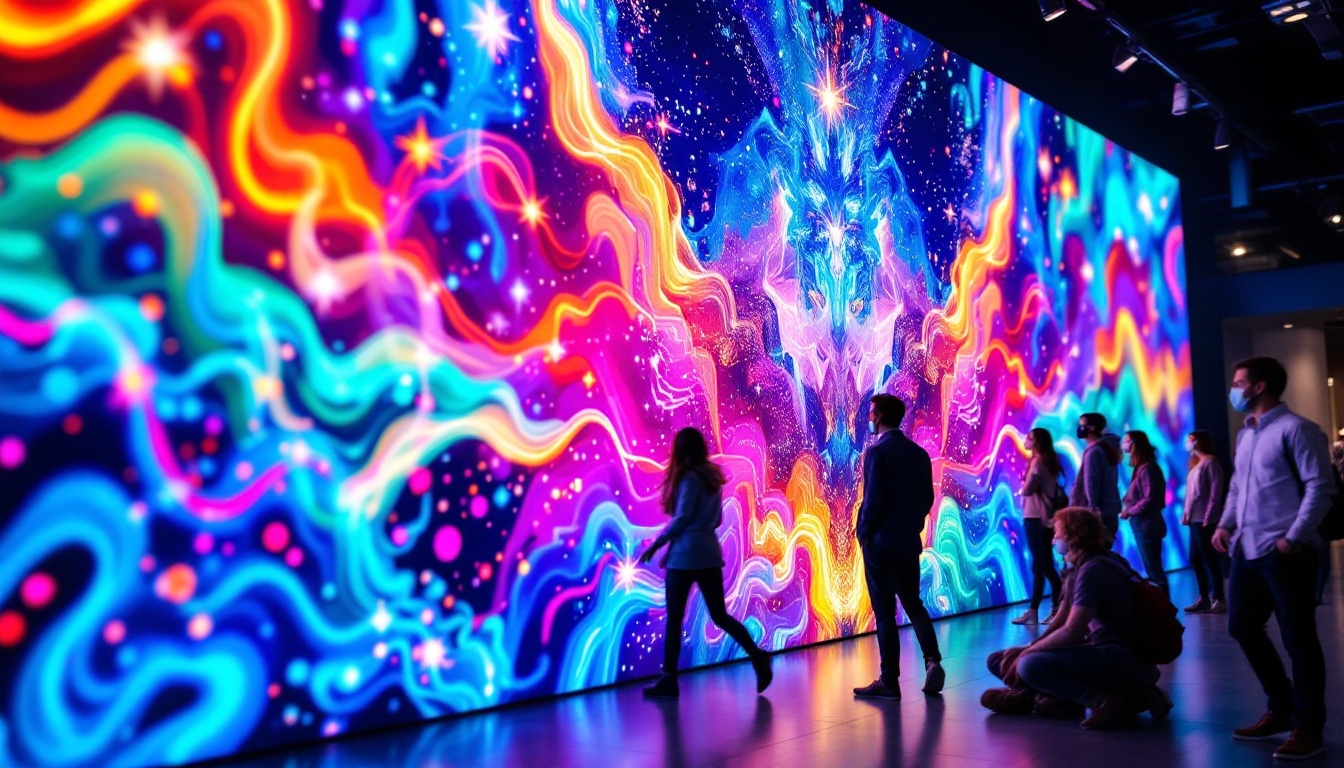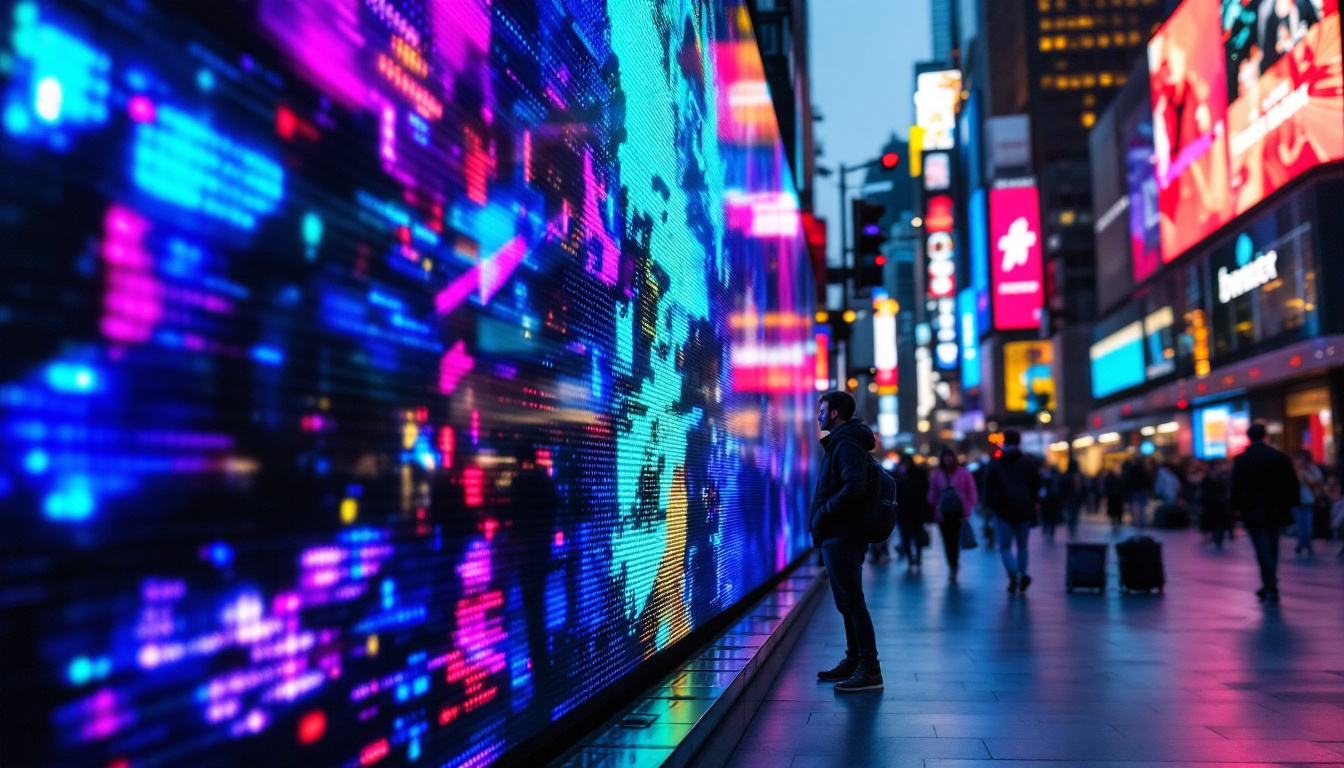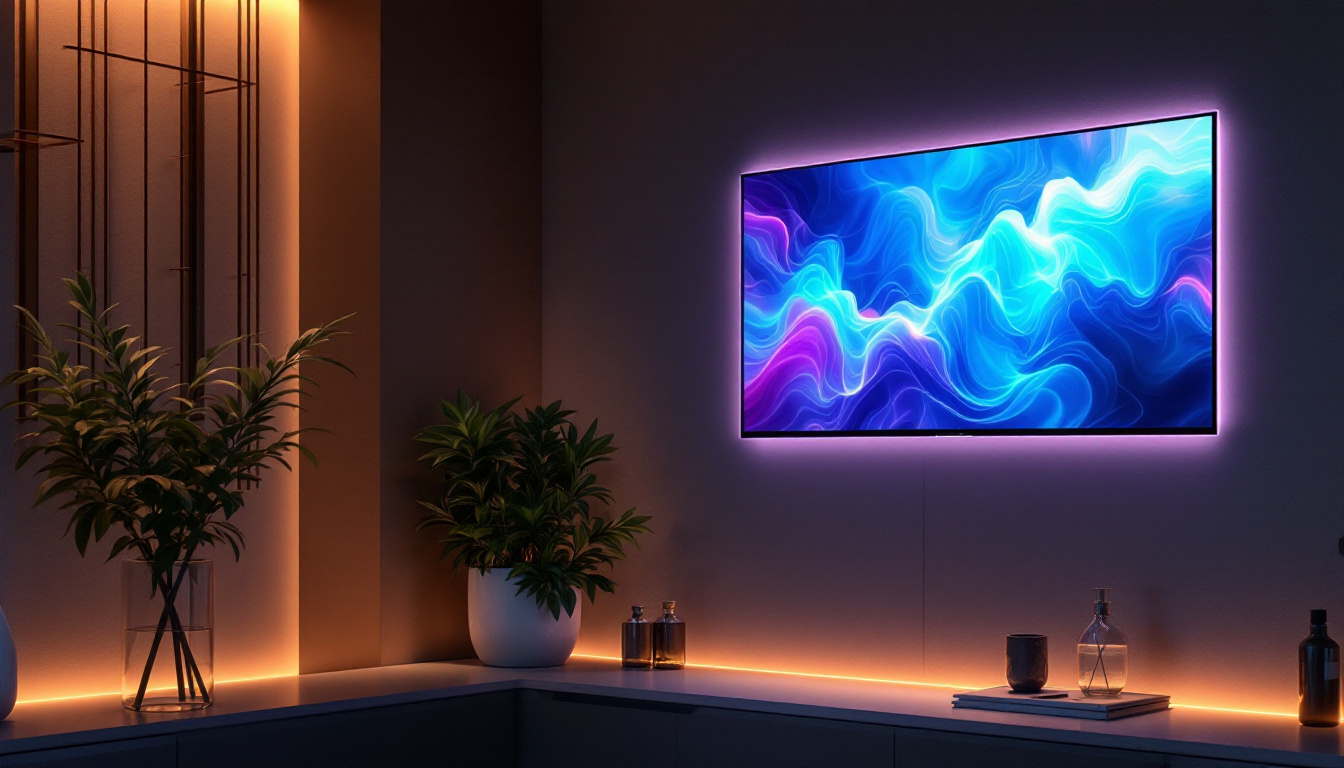In the realm of modern advertising and information dissemination, LED displays have emerged as a powerful tool. Mgs Malaysia, a leader in this field, has made significant strides in providing high-quality LED display solutions. This article delves into the intricacies of LED technology, its applications, and why it has become a preferred choice for businesses across various sectors.
Understanding LED Technology
LED, or Light Emitting Diode, is a semiconductor device that emits light when an electric current passes through it. This technology has revolutionized the way visual information is presented, offering vibrant colors, high brightness, and energy efficiency. The compact size and versatility of LEDs have made them a popular choice not only in consumer electronics but also in various industrial applications, lighting solutions, and even automotive designs.
The Basics of LED Operation
The operation of an LED is based on electroluminescence, a phenomenon where a material emits light in response to an electric current. The core components of an LED include a chip made from a semiconductor material, which is encapsulated in a protective casing. When current flows through the chip, electrons recombine with holes, releasing energy in the form of photons, which we perceive as light. The color of the emitted light depends on the energy bandgap of the semiconductor material used, with different materials producing different wavelengths of light.
Types of LED Displays
LED displays come in various types, each suited for different applications. The most common types include:
- Indoor LED Displays: These are designed for use in controlled environments, offering high resolution and brightness for close viewing. They are often used in venues such as theaters, conference rooms, and retail spaces, where clarity and detail are paramount.
- Outdoor LED Displays: Built to withstand the elements, outdoor displays are typically brighter and more durable, making them ideal for advertising billboards and public information systems. These displays often feature weather-resistant materials and enhanced brightness to ensure visibility even in direct sunlight.
- Transparent LED Displays: These innovative displays allow light to pass through, making them perfect for window displays and architectural applications. They provide a unique way to showcase products while maintaining visibility into the store or building behind them.
In addition to these common types, there are also specialized LED displays such as flexible LED screens, which can be bent and shaped to fit unconventional spaces, and high-definition LED screens that offer superior image quality for broadcasting and live events. The advancements in LED technology continue to push the boundaries of what is possible, enabling creative applications in art installations, sports arenas, and even in the development of smart cities where dynamic information can be displayed in real-time.
Applications of LED Displays
LED displays have found applications across numerous industries, transforming the way information is communicated. Their versatility and effectiveness make them a go-to choice for many businesses.
Advertising and Marketing
One of the most prominent uses of LED displays is in advertising. Businesses leverage the dynamic nature of LED technology to create eye-catching advertisements that can be updated in real-time. This capability allows for targeted marketing campaigns that can be tailored to specific audiences, enhancing engagement and increasing conversion rates. Furthermore, LED displays can be strategically placed in high-traffic areas, ensuring maximum visibility and impact. The ability to showcase vibrant colors and high-resolution images helps brands stand out in a crowded marketplace, making them an essential tool for modern marketing strategies.
Public Information Systems
LED displays are also widely used in public information systems, such as transportation hubs, airports, and train stations. These displays provide real-time updates on schedules, delays, and other critical information, ensuring that passengers are well-informed and can make timely decisions. Additionally, the use of LED technology in these environments enhances safety by clearly displaying emergency information and alerts. The bright illumination and clarity of LED screens ensure that messages are easily readable from a distance, which is particularly important in busy or chaotic settings where quick comprehension is necessary.
Entertainment and Events
In the entertainment sector, LED displays play a crucial role in enhancing the viewer experience. From concerts to sporting events, large-scale LED screens are used to display live feeds, graphics, and advertisements, creating an immersive environment for attendees. These displays can also be integrated with advanced technologies like augmented reality, allowing for interactive experiences that captivate audiences. Moreover, the flexibility of LED displays means they can be configured in various shapes and sizes, from massive outdoor billboards to intimate indoor setups, catering to the unique needs of different events. This adaptability not only enhances the visual appeal but also allows event organizers to create customized experiences that resonate with their audience.
Benefits of Using LED Displays
The advantages of incorporating LED displays into business strategies are numerous. Understanding these benefits can help organizations make informed decisions about their advertising and information dissemination methods.
Energy Efficiency
One of the standout features of LED technology is its energy efficiency. LED displays consume significantly less power compared to traditional display technologies, such as LCD or incandescent bulbs. This not only reduces operational costs but also minimizes the environmental impact, making LED displays a sustainable choice for businesses. Furthermore, the lower energy consumption can contribute to a company’s green initiatives, enhancing its reputation as an environmentally responsible organization. As energy costs continue to rise, the long-term savings associated with LED displays become even more appealing, allowing businesses to allocate resources to other critical areas.
Longevity and Durability
LED displays are designed to last. With a lifespan of over 100,000 hours, they outlast many other display technologies. Additionally, they are resistant to shock and vibration, making them suitable for both indoor and outdoor applications. This durability translates to lower maintenance costs and fewer replacements over time. The robust nature of LED technology means that businesses can rely on these displays in various environments, from bustling retail spaces to outdoor venues exposed to the elements. Moreover, the reduced need for frequent replacements not only cuts costs but also minimizes waste, aligning with sustainable business practices.
High Visibility and Brightness
LED displays offer exceptional brightness and visibility, even in direct sunlight. This quality is particularly important for outdoor advertising, where visibility can significantly impact the effectiveness of a marketing campaign. The ability to display vibrant colors and sharp images ensures that messages are communicated clearly and effectively. Additionally, LED technology allows for dynamic content, enabling businesses to change their messaging quickly and easily to reflect current promotions or events. This adaptability can be a game-changer in fast-paced environments, where timely communication is key to capturing customer attention and driving engagement.
Versatility in Applications
Another significant benefit of LED displays is their versatility across various applications. From retail storefronts and stadiums to corporate offices and transportation hubs, LED displays can be tailored to fit the specific needs of any environment. They can serve as digital signage, information boards, or even artistic installations, providing businesses with a wide range of options to enhance their visual communication strategies. Furthermore, advancements in LED technology have led to the development of flexible and transparent displays, allowing for innovative designs that can seamlessly integrate into architectural elements or create immersive experiences for viewers.
Enhanced Engagement
LED displays are not just about visibility; they also play a crucial role in enhancing audience engagement. The combination of bright visuals, dynamic content, and interactive features can captivate viewers and encourage them to interact with the displayed information. For instance, incorporating QR codes or touch-sensitive technology can lead to increased customer interaction, driving traffic to websites or social media platforms. This level of engagement is particularly beneficial in marketing campaigns, where capturing the audience’s attention is essential for driving conversions and fostering brand loyalty.
Choosing the Right LED Display
With a plethora of options available, selecting the right LED display can be a daunting task. Several factors should be considered to ensure that the chosen display meets the specific needs of a business or organization.
Resolution and Pixel Pitch
Resolution is a critical factor in determining the quality of an LED display. The pixel pitch, which refers to the distance between the centers of two adjacent pixels, plays a significant role in this aspect. A smaller pixel pitch results in higher resolution, making it suitable for close viewing applications, while a larger pixel pitch is more appropriate for distant viewing.
Size and Configuration
The size of the LED display should align with the intended application. Larger displays are ideal for outdoor advertising, while smaller, high-resolution displays are better suited for indoor environments. Additionally, the configuration of the display, whether it be flat, curved, or modular, can impact its effectiveness in a given space.
Environmental Considerations
When selecting an LED display for outdoor use, it is essential to consider environmental factors. Displays should be weatherproof, able to withstand extreme temperatures, and resistant to moisture and dust. This ensures longevity and reliability, even in challenging conditions.
Installation and Maintenance of LED Displays
Proper installation and maintenance are crucial for maximizing the lifespan and performance of LED displays. Understanding these processes can help businesses avoid common pitfalls and ensure optimal functionality.
Installation Process
The installation of an LED display involves several steps, including site assessment, structural analysis, and electrical setup. It is essential to engage professional installers who understand the technical requirements and can ensure that the display is securely mounted and properly connected to power and data sources.
Regular Maintenance
To keep LED displays functioning at peak performance, regular maintenance is necessary. This includes cleaning the display surface, checking electrical connections, and updating software as needed. Implementing a routine maintenance schedule can prevent issues and extend the life of the display.
The Future of LED Displays
The future of LED display technology is bright, with continuous advancements paving the way for even more innovative applications. As technology evolves, so too does the potential for LED displays to transform communication and advertising.
Emerging Technologies
As the demand for more interactive and engaging displays grows, emerging technologies such as augmented reality (AR) and virtual reality (VR) are beginning to integrate with LED displays. These advancements promise to create immersive experiences that captivate audiences and enhance storytelling.
Sustainability Initiatives
With an increasing focus on sustainability, the LED display industry is exploring eco-friendly materials and manufacturing processes. Innovations aimed at reducing waste and energy consumption will likely shape the future landscape of LED technology, making it an even more attractive option for environmentally conscious businesses.
Conclusion
LED displays have undeniably transformed the way information is conveyed and advertisements are presented. With their numerous advantages, including energy efficiency, durability, and high visibility, they have become a staple in various industries. Mgs Malaysia stands at the forefront of this technology, offering cutting-edge solutions tailored to meet the diverse needs of businesses.
As LED technology continues to evolve, organizations that embrace these advancements will be well-positioned to enhance their communication strategies and engage their audiences effectively. The future of LED displays is not only promising but also pivotal for businesses looking to thrive in an increasingly competitive landscape.
Discover LumenMatrix’s Innovative LED Display Solutions
Ready to elevate your visual communication and advertising strategies with the latest in LED display technology? Look no further than LumenMatrix, a pioneer in crafting immersive and dynamic visual experiences. From Indoor and Outdoor LED Walls to specialized solutions like Vehicle Displays and Transparent LED Displays, LumenMatrix offers a comprehensive range of products designed to captivate your audience and amplify your message. Embrace the future of digital signage with LumenMatrix’s advanced LED solutions. Check out LumenMatrix LED Display Solutions today and transform the way you connect with your audience.

